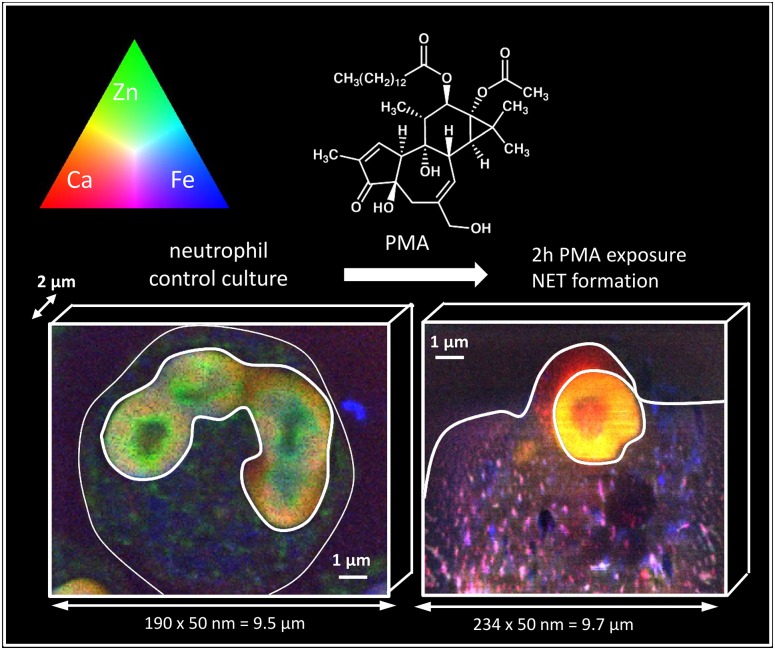Fig 1. RGB composite images of the trace level element distribution of Ca, Zn and Fe (represented by the red, green and blue color channel respectively) of two single, high pressure frozen and cryosubstituted human neutrophils (white blood cells) before and after stimulation with phorbol myristate acetate (PMA), inducing the formation of so-called Neutrophil Extracellular Traps (or NETs).
NETs are newly discovered structures which are believed to act as a defense mechanism against microbes via chelating proteins, removing crucial trace elements from the pathogen. As all intensities in the trichromatic maps are normalized to a single upper value, increases in color brightness also represent increases in concentration. A clear increase in cellular Ca concentration is revealed via appearance of a yellow nucleus and reddish cytoplasm. Intracellular Fe and Fe/Ca-rich structures are also emerging after 2 h stimulation with PMA, visible as blue and pinkish hot-spots. The absent green color in the PMA-stimulated neutrophil indicates the strong association of Zn to Ca and/or Fe. Results were obtained using synchrotron radiation based X-ray fluorescence at the ID22NI beamline (European Synchrotron Radiation Facility, Grenoble) operating at a spatial resolution of 50 nm.

